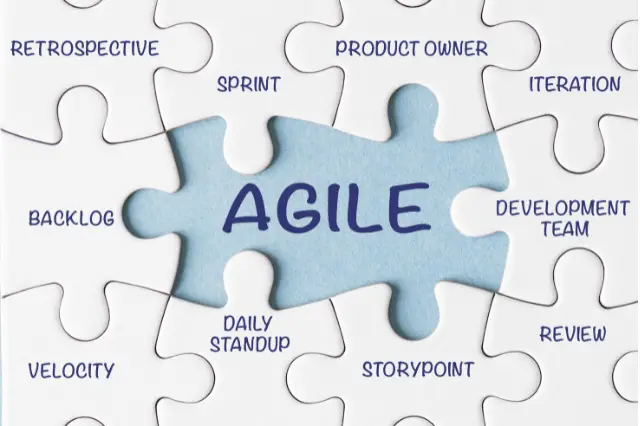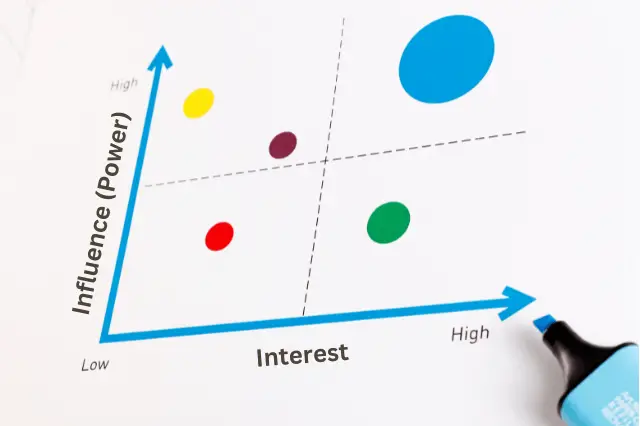Last Updated on June 21, 2025 by andrewshih
In the world of project management, especially within agile and adaptive frameworks, understanding the incremental and iterative development models is crucial.
Both approaches are fundamental in creating efficient, flexible, and customer-centered projects. But while they share some similarities, incremental and iterative models differ significantly in their approach to product delivery and refinement.
This guide dives into each model, compares them, and offers practical insights for project managers.
- What Are the Incremental and Iterative Development Models?
- Key Differences Between Incremental vs Iterative Development
- Characteristics and Best Use Cases for Each Model
- Combining Incremental and Iterative Approaches
- Benefits and Drawbacks of Each Model
- Incremental vs Iterative Development Model in the PMP Exam
- Choosing the Right Model for Your Project
What Are the Incremental and Iterative Development Models?
Incremental Development Model
The incremental development model is an approach in which the project is divided into smaller, deliverable portions called increments. Each increment is completed and delivered one at a time, gradually building up to the final product. Each piece is fully functional, adding new capabilities or features to the previous work.
Example: Imagine building an e-commerce website using the incremental model. The first increment could be the core shopping cart functionality. Later increments would add features like payment processing, user accounts, and product search, with each phase delivering a fully functional component.
Iterative Development Model
The iterative development model focuses on refining the product through repeated cycles (iterations). Rather than completing one feature at a time, each cycle improves or modifies an earlier version of the product until the final requirements are met. This approach is especially useful when requirements are unclear or may change over time.
Example: Developing a new software feature iteratively might start with a basic prototype, which is refined over multiple cycles, enhancing functionality, performance, and user experience until it meets final requirements.
Key Differences Between Incremental vs Iterative Development
Understanding the differences between these models can help project managers choose the right approach for their projects. Here’s a detailed comparison:
| Aspect | Incremental Development Model | Iterative Development Model |
|---|---|---|
| Primary Focus | Delivering complete and functional portions (increments) that build toward the final product. | Refining the product or feature through repeated cycles to improve quality and meet requirements. |
| Approach | Adds new, functional components or features with each increment, eventually creating the full product. | Builds a preliminary version and continuously refines it over multiple cycles. |
| Delivery of Value | Each increment adds new, usable functionality, providing value earlier in the project timeline. | Each iteration provides a new version, which may be a prototype or improved version, until the final requirements are met. |
| Customer Feedback | Feedback is gathered at the end of each increment, helping guide the development of future increments. | Feedback is gathered after each iteration, which is used to refine the product or feature in subsequent cycles. |
| When to Use | Ideal when customers benefit from accessing usable parts early and when requirements for each increment are clear. | Best when requirements are unclear, allowing flexibility for adjustment and refinement as the project progresses. |
| Example Application | Building a website in stages where each stage delivers a fully functional part, such as user accounts, search, and payment options. | Developing software where the first iteration is a basic version that is progressively refined to improve functionality and usability. |
| Project Type | Works well in projects with well-defined requirements and lower likelihood of scope changes. | Suitable for projects with evolving requirements or those benefiting from frequent refinement. |
| Strengths | – Delivers usable components early. – Allows for phased delivery and progress measurement. | – Supports evolving requirements. – Enables ongoing feedback and refinement. |
| Limitations | – Requires clear requirements upfront for each increment. – Limited flexibility once increment planning is complete. | – May not deliver fully functional components early. – Initial iterations are often prototypes, not final products. |
Characteristics and Best Use Cases for Each Model
Characteristics of the Incremental Model
- Completion of Work in Parts: Each increment is a self-contained part, with each new increment adding to the project’s functionality.
- Early Customer Feedback: Stakeholders can provide input after each increment, which guides future development.
- Quick Wins: By delivering functional parts early, incremental development allows for faster access to project benefits.
Best Use Cases:
- When delivering completed, functional parts early benefits customers.
- Projects with well-defined requirements for each increment.
- Ideal for traditional or hybrid project approaches that benefit from clear, segmented phases.
Characteristics of the Iterative Model
- Continuous Refinement: Each iteration builds on previous work, improving or enhancing functionality.
- Learning and Adjustment: Stakeholder feedback is incorporated into each cycle, making it suitable for projects where requirements may evolve.
- Evolving Product: Early iterations may not be fully functional but gradually become refined until the product meets all specifications.
Best Use Cases:
- When project requirements are unclear or likely to evolve.
- Projects where feedback and refinement improve the final outcome.
- Suitable for agile and adaptive project management methods where continuous improvement is prioritized.
Combining Incremental and Iterative Approaches
In practice, many projects use a blend of incremental and iterative approaches, especially within agile frameworks.
This hybrid approach, known as incremental-iterative development, delivers a functional part of the product as an increment while continuously refining it through iterations. This combination is often seen in agile methods like Scrum, where each sprint represents both an increment (delivering a potentially shippable product) and an iteration (where improvements and feedback adjustments occur).
Example: In an incremental-iterative approach, a project could deliver an increment with a minimum viable product (MVP) that undergoes multiple iterations to enhance usability, performance, and additional features based on user feedback.
Benefits and Drawbacks of Each Model
Incremental Model
Benefits
-
Delivers functional parts earlier, providing immediate value.
-
Allows for phased delivery and progress visibility.
-
Reduces project risk by delivering smaller, complete sections of the product.
Drawbacks
-
Requires well-defined requirements upfront.
-
May restrict flexibility if incremental planning is rigid.
-
Limited scope for adjustment once an increment is planned.
Iterative Model
Benefits
-
Allows for continuous refinement and supports evolving requirements.
-
Encourages frequent stakeholder feedback, leading to a product that aligns closely with user needs.
-
Enables flexibility, adapting the product as the project advances.
Drawbacks
-
May not deliver functional components early since early iterations are often prototypes.
-
Can lead to scope creep if refinements aren’t well managed.
-
Requires careful management to avoid excessive iteration without progress toward the final product.
Incremental vs Iterative Development Model in the PMP Exam
In the PMP exam, understanding the differences between incremental and iterative models is essential. Here’s how these concepts are commonly assessed and applied:
- Identifying the Model Based on Delivery and Feedback: PMP exam questions often describe project scenarios. If a question highlights delivering completed parts of a product in stages, it likely points to the incremental model. However, if it emphasizes refinement and repeated improvement, the answer is likely the iterative model.
- Requirement Clarity and Flexibility: Questions may ask about the best approach for projects with either clear or evolving requirements. The incremental model is suitable when requirements are well-defined, while the iterative model fits projects where requirements are uncertain or may evolve.
- Using Combined Approaches in Agile: PMP exam questions may describe agile scenarios using a hybrid of incremental and iterative approaches. Agile methods often combine these models, where each sprint delivers a functional increment that is refined iteratively. Recognizing this hybrid approach can help identify the most accurate answers in agile or adaptive project settings.
- Exam Tip: Look for clues about whether the project aims to deliver early value with working parts (incremental) or prioritizes repeated improvements to meet evolving needs (iterative). This understanding can guide you toward the correct approach based on project goals.
Key Takeaways for the PMP Exam:
- Incremental Model: Delivers fully functional increments progressively, with a focus on providing value sooner.
- Iterative Model: Refines the product in cycles, adapting to new information and feedback to meet final requirements.
- Application in Agile: Agile projects often combine both models to balance the need for early delivery with continuous refinement and improvement.
Choosing the Right Model for Your Project
Selecting between incremental and iterative development models depends on your project’s requirements clarity, need for flexibility, and delivery expectations.
The incremental model works best when you have a clear vision of the requirements and can benefit from early, phased functionality. Conversely, the iterative model shines in projects with evolving needs, where learning, feedback, and progressive refinement are critical to the outcome.
In agile environments, consider combining both approaches to balance the early delivery of functional increments with ongoing refinement through iterations. This hybrid method can optimize value delivery while ensuring the product aligns with customer expectations over time.



